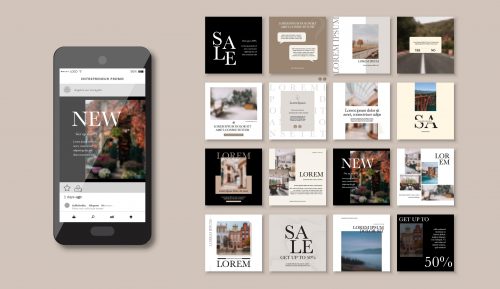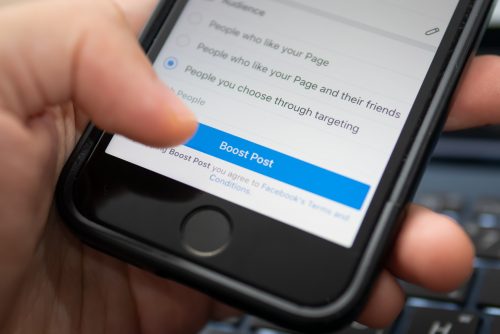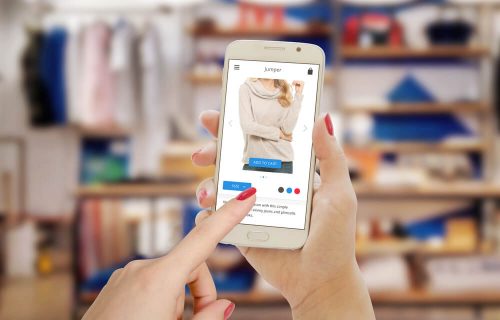As a customer, everytime you think of buying something online (or even in-person) what do you usually do?
Most of the time, some research to find out more about the product/ service; what the brand and its customers have to say. In fact this has become an unavoidable first step for most potential purchases.
The influence of social media on buyers’ shopping patterns continues to grow, with 97% of Gen Z consumers using social media platforms as their main source of shopping inspiration according to a report by the Digital Information World.

Apart from checking on details about the functionality, availability and price of the product on the company’s website or social media, one of the most researched areas is exploring reviews and reports about the product shared by its users. Infact, market research reveals that most people visit a brand’s social pages before visiting their website!
The need for every ecommerce store to have a good and targeted social media presence is therefore undeniable and has become an essential feature of their marketing strategy as they work towards creating a following and ultimately conversions that could add to their bottom line numbers.

There are two broad categories of social media postings that the ecommerce merchant could be publishing on their social media handles – Organic social posts and Paid social posts.
Read on to understand more about each of these that will allow you to adopt the best possible social media strategy that can help you grow and scale your ecommerce business.
Organic Social Posts
These are posts that you produce organically and publish on social media channels with the intention of engaging and interacting with an audience. Such organic content could include text, images or videos that the brand/ business shares for free on social media like Facebook, Instagram, Twitter, YouTube and even Linkedin.

Such posts will usually show up on the feeds of people who already follow you or also people following any hashtags that you have used in your post. These followers can also choose to share the post/ content with their friends and followers if they so wish.

Potential customers have more trust in such organically generated content. This is why many of them choose to check out a brand’s social pages even before visiting their website to know more about the content or comments by yourself or by your customers. Organic content, being original and authentic, helps viewers get to know you better and develop trust in your brand/ product.

Such content is therefore a great way for the brand to reach out to existing customers/ followers, engage with them and reply directly to questions and concerns raised by them. This can help build trust and transparency of your brand and nurture a relationship with potential customers. Such engagement can often help in building a community of like minded people who share similar beliefs and values.
https://blog.goshopmatic.com/build-an-online-community-keep-your-brands-reputation-protected/
Organic content is posted and distributed for free. So while it does not cost you a cent to get your message across, the problem is that there are no guarantees that the message will actually reach the audience who you would like to engage or a wider target market
Moreover, with most platforms using ranking algorithms, most of the time not even all your followers get to see all of your organic posts- leave alone new people. This is probably the biggest drawback of Organic Social that makes it necessary to explore the alternative option of Paid Social.
Paid Social Posts
Businesses could also choose to post content on their social media handles as a form of advertising by paying the social media network for their posts to be published and distributed among audiences beyond their followers, choosing to precisely target certain segments more than others.

Such sponsored content (be it text or image or video) can be made to show up on the feeds of people who may or maynot be following them. This helps in spreading the word around to a larger audience thereby increasing brand awareness, attracting new followers and enhancing the chances of a conversion. Brands could also use paid social campaigns to promote upcoming events like sales or promotions, generate leads and drive conversions.
The data driven targeting capabilities of Paid social posts are undeniable and are usually based on the shopper’s demographics, location, interest areas or even past buying patterns and preferences of the user. This makes it a very effective marketing tool.
The social media networks, equipped with their algorithms strategically place your paid social content on prime digital real estate that increases the chances of the viewers coming across the material. The wider outreach of such professionally scripted unique advertisements can often help in a more successful acquisition and conversion rate.

As shopping directly on their social media platforms gets more popular with customers, businesses are choosing to invest more on paid social content and reap its benefits. Cost per Click (CPC) is one of the most common Paid Social advertising models adopted by ecommerce businesses to display their sponsored ad content. It is a method by which social media companies use to bill their customers (the ecommerce merchants) based on the number of times a visitor clicks on an advertisement.
So which is better?
There is no absolute answer to this question as both have their pros and cons.
While Organic Social posts are naturally more genuine and reliable as a source of feedback for the customer, there is a good possibility that the post might not be showing up on the feed of every person you want to reach with your message; or every follower of your brand. Moreover these may not even be easy to locate in the crowded media space. In short, an organic piece of content leaves things to chance as you are not sure if and how your audience will engage or react to it.
In order to guarantee that your posts/ content is seen by the people who matter there is no choice but to turn to Paid Social that enables brands to break through algorithms and connect with audiences. However every customer knows that these posts have been created as a part of the advertising and marketing campaign and is likely to be taking all your claims with a pinch of salt.
They complement one another
Rather than making a choice of going with one or the other, there is a middle path that actually works well for many ecommerce merchants. While engaging and building trusting relationships with the audience through organic social, the targeted advertising approach of paid social works well in reinforcing those values and extending the reach of your brand to a broader audience.
Facebook allows one such easy possibility of getting your organic content seen by more people for a cost with its “boost” button.

It also lets you check the waters by paying a small amount to boost certain organic posts that have been engaging and have been well received by your followers. This will allow you to get the content (that has been favoured by your followers) in front of a wider audience, thereby reaping most of the benefits of a paid social post.
If such a move yields good results, then it surely makes sense to allocate a budget to reach a larger audience through more investment in Paid Social.
Ideally, a judicious combination of both these categories of posts could be used to complement and augment the benefits of each other. This works out to be a better approach than choosing one over the other!
Would also recommend you to check out the following
https://blog.goshopmatic.com/how-to-create-your-first-facebook-ad/
https://blog.goshopmatic.com/tips-for-generating-sales-leads-through-social-media/



